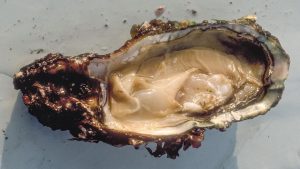As I sit and overlook Vancouver Harbour, it’s timely that hockey buddy Kevin Allen had a paper published about lettuce: because who doesn’t think of locally grown lettuce in Jan.
 Increased consumer demand for fresh leafy produce has been paralleled by an increase in outbreaks and illness associated with these foods.
Increased consumer demand for fresh leafy produce has been paralleled by an increase in outbreaks and illness associated with these foods.
Presently, data on the microbiological quality and safety of produce harvested in the Lower Mainland of British Columbia is lacking. Therefore, fresh green, red, and romaine lettuce samples (n = 68) were obtained from five regional farmers’ markets in late summer of 2012 and subsequently analyzed to determine total numbers of aerobic bacteria, coliforms, and Escherichia coli. Additionally, enrichment procedures were used to detect low concentrations of E. coli.
Obtained E. coli isolates were subjected to multiplex PCRs to determine phylogenetic groupings and the presence of virulence genes (eaeA, hlyA, stx 1, and stx 2). All E. coli were tested for resistance to 15 antibiotics using a disk diffusion assay.
Lettuce samples yielded mean aerobic colony counts of 6.3 log CFU/g. Coliforms were detected in 72% of samples, with a median concentration of 1.9 log CFU/g. Of samples, 13% were found to harbor E. coli, with a median level of 0.7 log CFU/g. Antibiogram typing of all E. coli (n = 33) revealed that 97% possessed resistance to one or more antimicrobials, with resistance to amikacin (58%), trimethoprim (48%), and trimethoprim-sulfamethoxazole (45%) being the most common.
Phylogroup typing showed that 79% of these isolates belonged to group B1, with the remaining assigned to groups A (9%) or D (12%); no virulence genes were detected. Considering that phylogroup indicators suggestive of fecal contamination (groups A and D E. coli) were recovered in lettuce samples presented at retail, further work is required to explore at what point along the food chain contamination occurs.
Also, this study shows the presence of multidrug-resistant E. coli in fresh vegetables. Summed, these data provide important information on the microbiological quality of leafy vegetables grown in British Columbia through the detection and characterization of frequently used indicator organisms.
Microbiological survey of locally grown lettuce sold at farmers’ markets in Vancouver, British Columbia
jan.15
Journal of Food Protection®, Number 1, January 2015, pp. 4-234, pp. 203-208(6)
Wood, Jayde L.; Chen, Jessica C.; Friesen, Elsie; Delaquis, Pascal; Allen, Kevin J.
http://www.ingentaconnect.com/content/iafp/jfp/2015/00000078/00000001/art00028
 RCMP (that’s the Royal Canadian Mounted Police, where’s your horse?) say they’ve had three reports about food tampering at separate stores in the Vancouver Island city since December 2017, but no injuries have been reported.
RCMP (that’s the Royal Canadian Mounted Police, where’s your horse?) say they’ve had three reports about food tampering at separate stores in the Vancouver Island city since December 2017, but no injuries have been reported.




